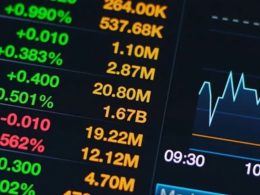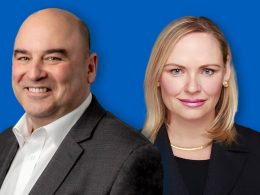by Russ Koesterich, iShares
As discussed in previous posts, Congress kicked off the New Year with a bare bones deal to avert (or at least delay) the fiscal cliff. Though markets responded positively to the news Wednesday morning, the euphoria isn’t likely to last.
The partial deal fails to address the longer-term fiscal challenges facing the United States, will likely damper short-term US consumption and leaves lingering uncertainty surrounding the debt ceiling. As such, expect more late-night drama from Washington in coming weeks, a modest fiscal drag on the US economy early in the year and increased volatility for financial markets.
In the meantime, many investors are likely now wondering “so what do I do with my money?” Here are five ideas.
- Consider US large and mega cap equities. Global growth is likely to surpass US growth this year, implying that companies with greater exposure to the global economy should outperform. As such, I advocate a higher allocation to US mega and large cap companies, which are generally less sensitive to domestic growth. Potential solutions for investors would be the iShares S&P 100 Index Fund (OEF) or the iShares S&P Global 100 Index Fund (IOO).
- Look outside the United States. Investors may also consider reducing any overweight positions they may have to US stocks as a whole. Given my near-term outlook for slower US growth and more volatility, US stocks’ premiums may not be justified. Instead, investors may want to consider favoring those segments of the international market most levered to global growth such as emerging markets, smaller developed countries and peripheral European exporters. While these segments face their own challenges, their valuations are generally more forgiving and their growth estimates may be less prone to disappointment.
- Remain cautious on US small caps and consumer stocks. Small and mid cap stocks have historically been the most exposed to domestic growth. Weaker consumption also suggests consumer discretionary stocks – currently trading at a 20% premium to the broader market – are vulnerable.
- Don’t abandon dividend stocks. While certain segments of this style appear expensive (i.e. US utilities), dividend stocks are still attractive despite a higher dividend tax rate. US corporations have the wherewithal to raise dividend payouts to compensate investors for any change in tax treatment. Investors would want to look for companies that are cash-flow rich and have a track record of increasing payout rates. I like the iShares High Dividend Equity Fund (NYSEARCA: HDV), given its low beta and quality screens that the index it seeks to track has in place, and the iShares Dow Jones International Select Dividend Index Fund (NYSEARCA: IDV).
- Within fixed income, focus on credit and municipal bonds. Treasuries still look unattractive. Real yields are negative and duration risk is high, which means that even a modest increase in yields would have a significantly negative impact on Treasury prices. Instead, investors may want to look at more attractive credit sectors such as high yield, bank loans, structured credit (including commercial mortgage-backed securities, collateralized loan obligations and non-agency mortgages) and emerging markets debt. Finally, municipal bonds remain competitive on a tax-adjusted basis for US investors.
Russ Koesterich, CFA, is the BlackRock Global Chief Investment Strategist and a regular contributor to the iShares Blog. You can find more of his posts here.
Source: Bloomberg
The author is long IOO, HDV and IDV
In addition to the normal risks associated with investing, international investments may involve risk of capital loss from unfavorable fluctuation in currency values, from differences in generally accepted accounting principles or from economic or political instability in other nations. Emerging markets involve heightened risks related to the same factors as well as increased volatility and lower trading volume. There is no guarantee that dividend funds will pay dividends.
Bonds and bond funds will decrease in value and are subject to credit risk, which refers to the possibility that the debt issuers may not be able to make principal and interest payments or may have their debt downgraded by ratings agencies.
Credit sectors such as high yield, bank loans and structured credit carry a greater degree of risk than treasury securities. High yield securities may be more volatile, be subject to greater levels of credit or default risk, and may be less liquid and more difficult to sell at an advantageous time or price to value than higher-rated securities of similar maturity.
Copyright © iShares










